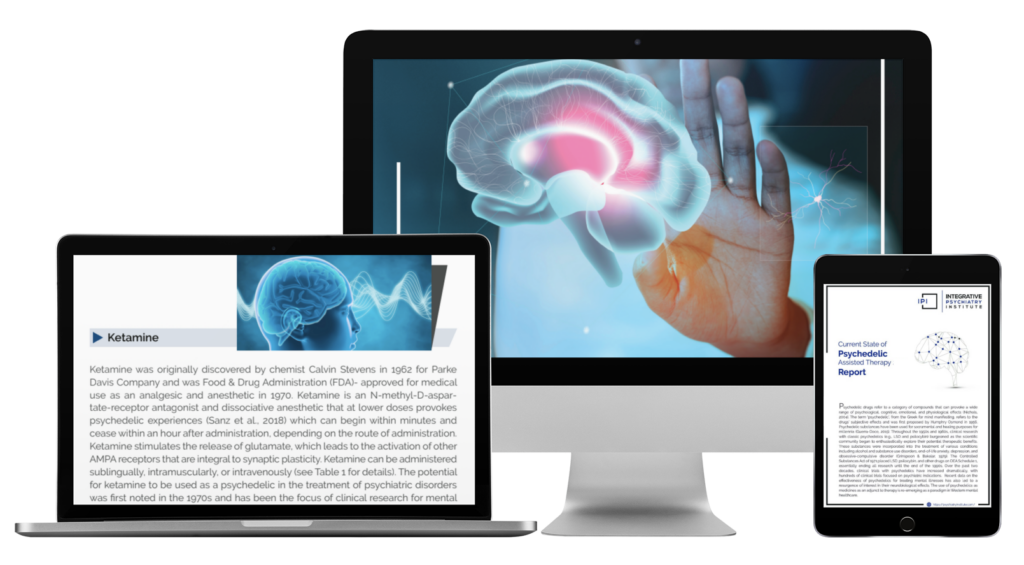
The correlation between psychedelic use and “psychological flexibility” has been recently explored in research by Robin Carhart-Harris [link HERE to article]. One of the potential benefits of psychedelics is to support increased psychological flexibility, potentially useful even to prevent psychological disorders. In theoretical discussion and research, ego dissolving experiences are a mechanism to loosen psychologically rigidity to promote ego structures that lend to more flexibility such as behavior change in accordance with personal values, remaining present to higher degrees of stimuli and emotional bandwidth, and the ability to adapt more often and quicker to new situations in one’s life.
Ego dissolution can be experienced as both blissful and relieving, as well as overwhelming and terrifying. Typically overwhelm and terror occur when there is an experience of the Self fragmenting from a sense of cohesion, and the self in disparate parts are trying to maintain a sense of identity as if it still exists. This experience of fighting for control and a normal reality can flood an individual in fear.
With ketamine in particular, ego dissolution can reliably occur at higher doses. An experience of a fragmented, disturbing ego dissolution can happen in healthy individuals; however, it’s not common for these experiences to not return to a cohesive self within days with post integration sessions. However, clients with serious mental illness tend to be more prone to these more difficult experiences, partly due to having a less flexible self structure, which, in theory, can shatter into fragments when the boundary between self and other is loosened by a psychedelic experience. Therefore, clients that have more difficult mental health concerns will likely require more integration to return to seeing this as a positive, growth oriented experience.
Although this is not an experience to strive for with a client, it’s also not recommended to try and avoid at all costs. The benefits of altering a very rigid psychological structure after decades of other interventions not working can promote much greater healing with proper integration, if that were to occur.
The question, “What is an ego dissolution state?” has yielded many opinions and is very relevant to working as a psychedelic therapist. Over the past 70 years of clinicians and researchers writing about the impacts that psychedelics appear to have on the self, many models have emerged for understanding ego dissolution states and the fragmented experiences of the clients that sometimes follow.
A developmentally oriented therapist might understand a fragmented state as a pre-egoic state – akin to the concept that psychosis could be understood as a state similar to how an infant experiences reality. A parts-oriented therapist might consider the fragmented ego as an opportunity to integrate shards of a shattered self. A traumatologist might think of these as dissociative states as a response to, or recapitulating, a traumatic event. For example, states of fragmentation which repeatedly occurred during a (complex) traumatic early childhood, and which were suppressed over time, can and do re-emerge from behind the veil of ego defenses. A psychodynamic therapist might conceive of ego fragmentation as a primitive dissociative ego defense.
Whatever the orientation, the first step when a client presents in a fragmented state after a psychedelic experience is psychological first aid to support a coalescence of the self-structure that has been temporarily lost. A variety of supportive approaches can be very helpful to clients during these times.
Relational support (versus isolation) is critical. It’s important to do in person integration sessions for these clients whenever possible. Calm, relaxed presence of another person can make all the difference. There is a delicate balance for someone who is severely fragmented between not talking about it too often throughout the day as that can exacerbate the experience, yet not feeling alone and knowing they share about it when they need to. More frequent follow-ups may be necessary as well. Therapeutic touch can be very helpful for grounding in such states, but as always should be approached with care and caution, without assuming anything and asking first.
Another element of support is to diminish the risk of further overstimulation. The therapist should assume that many stimuli experienced by the client in such a state can feel overwhelming. This is especially true of the senses (e.g. sensory inputs are typically very heightened). This may include directing the client and caregivers toward lowering lighting, decreasing the exposure to chaotic or loud public environments, mindfulness around the type of music they are listening to, and slowing the pace of life as much as possible.
Impulsivity is often heightened in these states, and clinicians would do well to anticipate such experiences and inquire directly about what impulses are arising for these clients. Big life decisions should be postponed. Clients can make rash life decisions during a period of a fragmented sense of self, only to realize when they return to a regulated, cohesive sense of self that big life changes were not necessary or even resulted in relational, financial, or personal self harm. The question of competency should be considered or even directly challenged with a client who plans to make an impulsive decision and refuses to wait until they are more whole again.
Foods that are perceived as supportive can be explored. Teaching the client mindfulness exercises can be very comforting. Nature is a powerful intervention during these times, such as lying flat on the earth and feeling the grounding energy. Returning to routine behaviors such as exercise, reading, etc. can also help coalesce the ego quicker from the familiarity. Weighted blankets, massage, yoga are also very effective at “grounding” individuals and helping them reintegrate into their bodies. Alternating hot and cold compresses on the back of the neck – a tool borrowed from dialectical behavioral therapy (DBT) – can also help. Because fragmentation blocks access to some of these resourcing strategies, a wide range of them should be proposed and discussed to personalize the integration process, as well as serving as a temporary external regulator with accountability check-ins and support.
Equally important is psychoeducation about what is likely occurring. Without a framework about what has happened, the client can remain extremely disoriented and terrified that this experience will never change. Many clients will wonder whether they have “broken their mind permanently” or “gone crazy.” It is important to educate the client from a theoretical perspective about what is occurring, why this isn’t a mistake or something that shouldn’t have happened, and how this temporary “loosening” of the mind can lead to a greater sense of flexibility and health in the cohesiveness that will arise on the other side. Reassuring the client that such states gradually resolve with integration or even sharing examples of other clients or yourself going through similar states can also feel deeply reassuring.
Written By:
Keith Kurlander MA, LPC
Will Van Derveer, MD







